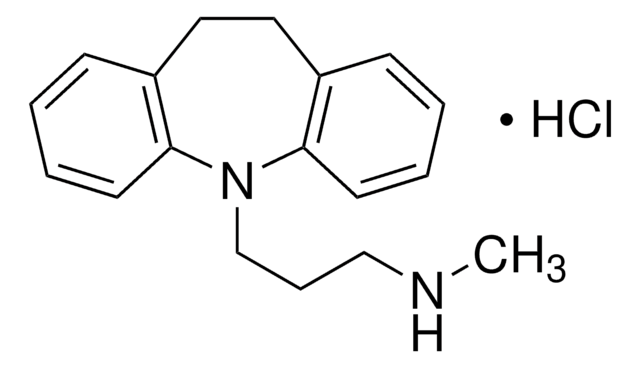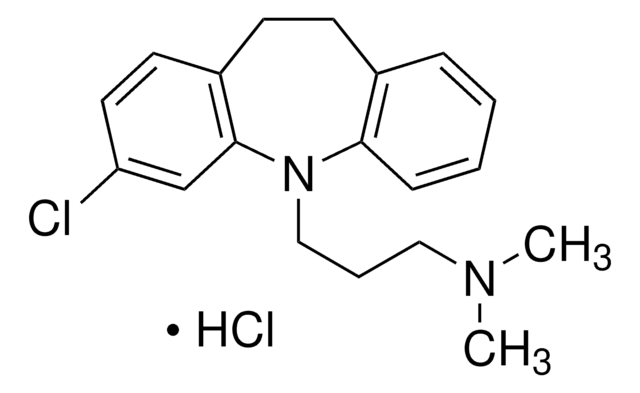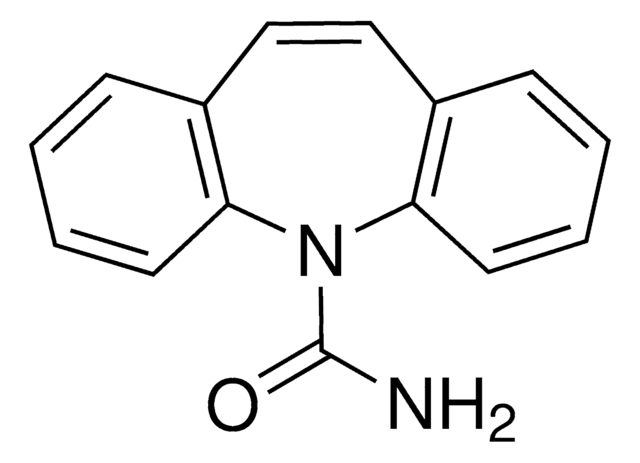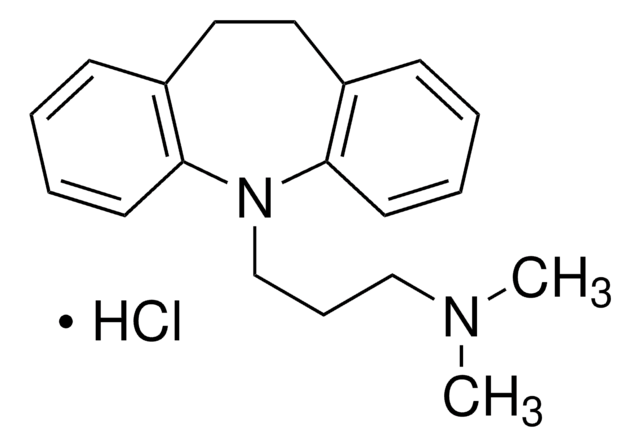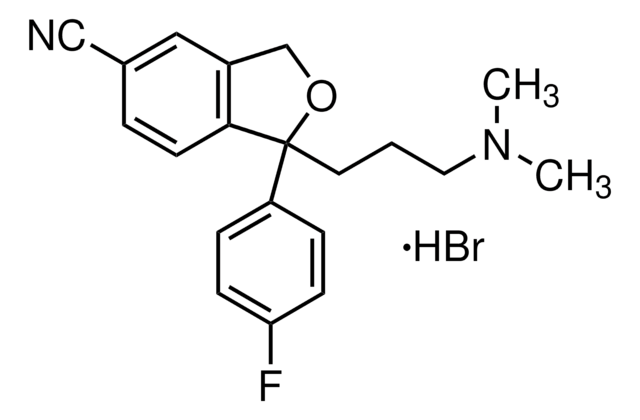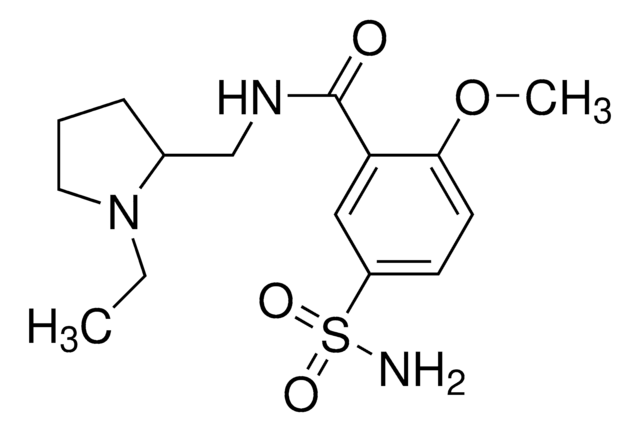Wichtige Dokumente
1172006
USP
Desipramin -hydrochlorid
United States Pharmacopeia (USP) Reference Standard
About This Item
Empfohlene Produkte
Qualität
pharmaceutical primary standard
API-Familie
desipramine
Hersteller/Markenname
USP
Anwendung(en)
pharmaceutical (small molecule)
Format
neat
SMILES String
Cl[H].CNCCCN1c2ccccc2CCc3ccccc13
InChI
1S/C18H22N2.ClH/c1-19-13-6-14-20-17-9-4-2-7-15(17)11-12-16-8-3-5-10-18(16)20;/h2-5,7-10,19H,6,11-14H2,1H3;1H
InChIKey
XAEWZDYWZHIUCT-UHFFFAOYSA-N
Angaben zum Gen
human ... SLC6A2(6530)
Suchen Sie nach ähnlichen Produkten? Aufrufen Leitfaden zum Produktvergleich
Allgemeine Beschreibung
Anwendung
- Clomipramine Hydrochloride
- Desipramine Hydrochloride
- Desipramine Hydrochloride Tablets
- Imipramine Hydrochloride
- Imipramine Hydrochloride Tablets
- Imipramine Pamoate Capsules
Hinweis zur Analyse
Sonstige Hinweise
Ähnliches Produkt
Signalwort
Danger
Gefahreneinstufungen
Acute Tox. 4 Oral - Eye Irrit. 2 - Resp. Sens. 1 - Skin Irrit. 2 - Skin Sens. 1 - STOT SE 3
Zielorgane
Respiratory system
Lagerklassenschlüssel
11 - Combustible Solids
WGK
WGK 3
Flammpunkt (°F)
Not applicable
Flammpunkt (°C)
Not applicable
Hier finden Sie alle aktuellen Versionen:
Analysenzertifikate (COA)
Leider sind derzeit keine COAs für dieses Produkt online verfügbar.
Wenn Sie Hilfe benötigen, wenden Sie sich bitte an Kundensupport
Besitzen Sie dieses Produkt bereits?
In der Dokumentenbibliothek finden Sie die Dokumentation zu den Produkten, die Sie kürzlich erworben haben.
Unser Team von Wissenschaftlern verfügt über Erfahrung in allen Forschungsbereichen einschließlich Life Science, Materialwissenschaften, chemischer Synthese, Chromatographie, Analytik und vielen mehr..
Setzen Sie sich mit dem technischen Dienst in Verbindung.